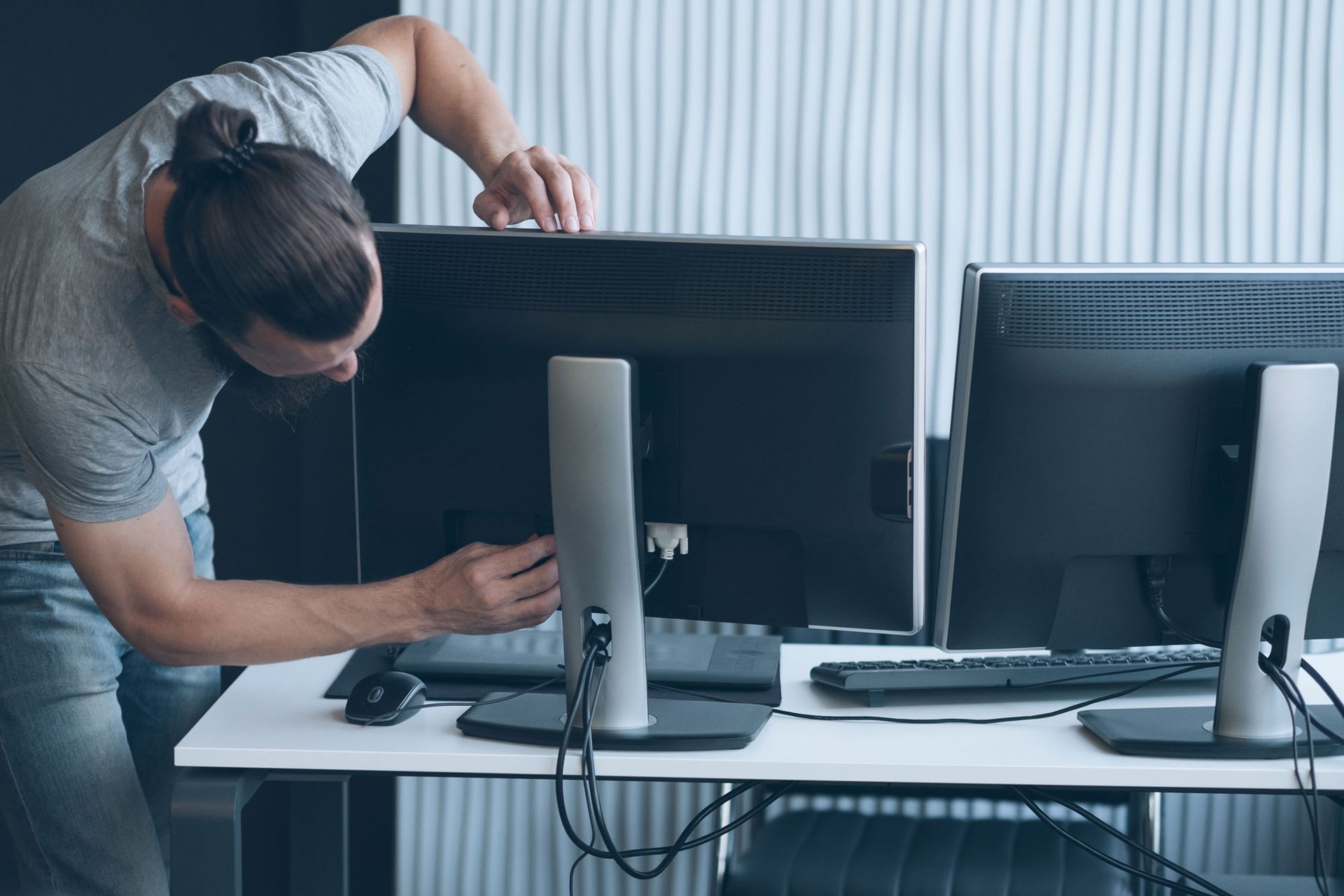How to set up dual monitors – everything you need to know in 4 easy steps
Here’s how to set up dual monitors so you can clean up your workspace and stop cluttered tabs and windows getting the better of you

Learning how to set up dual monitors is a great fix when you've got a lot of work to do and even a large computer screen feels cramped.
Whether in the office or working from home, separating your work across monitors is the perfect way to spread your work out so that you can see everything, or just ensure that you are not distracted by other tasks by moving them onto a different screen.
“It’s easy to get bogged-down in detail, but with modern desktop and laptops it’s a doddle to set up dual monitors,” says John Warburton, homes and interiors specialist at JWC.
Dual monitors work in a number of ways, John explains: extending your desktop into a larger work area, enlarging what is on a smaller screen so that you can see it better, or even shifting all of your distractions to one monitor and switching off the display altogether.
If you’re looking to learn how to set up dual monitors, then, you’ve come to the right place. Here’s everything you need to know to optimize your workspace.
How to set up dual monitors in 4 steps
You will need:
- Your usual laptop or desktop
- An extra monitor (or two!)
- HDMI cables – but check your laptop and monitor ports first to see which cable they require
1. Check which cables you need to connect you computer to your monitor
After acquiring your screens, the first step to setting up dual monitors is checking which cables you need to connect them together. On Windows, this is typically an HDMI cable, but check before you purchase, as it could be a VGA or DVI cable that you need.
If you use a Mac, you will need a video cable for each display, which might require purchasing an adapter. Check your product specifications to be sure.
2. Ensure all of your cables are properly connected
Once you’ve acquired the correct cable, connect it to your devices, ensuring that the monitors and computers all have power and are switched on.
3. Bringing up display options and choosing the one you want
“Press the Windows logo key and ‘P’ so that you can see the display options,” Will Driscoll, co-founder of e-commerce site EZ Shopper, advises. “Simply click on one of the following options: ‘Duplicate’, ‘Extend’ or ‘Second screen only’.”
Select one of the options based on your requirements.
“’Duplicate’ allows you to see the same thing on both of your screens, ‘Extend’ allows you to see your desktop across multiple screens (where you can move items between the two screens), and ‘Second screen only’ allows you to see everything on the second display only,” Will explains.
4. Align your mouse to ensure that it flows seamlessly from screen to screen
Once you have selected a display option, you will be shown two screens labelled 1 and 2.
“Use your Mouse to align screens 1 and 2 to mimic how they look in the real world,” says John at JWC. “If your monitors are side by-side, place them side-by-side in the window; if you’re using a laptop and the new screen is offset from your device’s display, arrange accordingly.
“This is important because where the screens butt-together is where the mouse can travel from one to the other,” says John.
Click ‘Apply’ and you’re done!

Troubleshooting: the alternative route to setting up dual monitors
“If this doesn’t work, there’s an alternative way to set up a dual monitor,” says Will at EZ Shopper. “Select ‘Start’ and then click onto ‘Settings’. Select ‘System’ and then click through to ‘Display’.
“Your PC should show your desktop and automatically detect your monitors. If you cannot see this, click ‘Multiple displays’ and then ‘Detect’,” Will advises. “Next to the image of your desktop, there should be a dropdown list where you can choose how your screen will project across your displays.
“Once you’ve chosen your desired set-up, click ‘Apply.’ To make the most out of your displays, you should opt for the recommended settings; however, you can change the resolution of your displays if you wish to do so,” says Will.
Be The First To Know
The Livingetc newsletter is your shortcut to the now and the next in home design. Subscribe today to receive a stunning free 200-page book of the best homes from around the world.
Olivia Emily is one of the most exciting new talents in consumer lifestyle journalism. Currently finishing off a Masters in Journalism at the City University, London, she has quickly proved herself at being adept on reporting on new interiors trends. A regular contributor to Livingetc, she is brilliant at being able to decode information for our audience.
-
 The 12 Best Table Lamps for Reading —I'm a Certified Bookworm (and Shopping Expert)
The 12 Best Table Lamps for Reading —I'm a Certified Bookworm (and Shopping Expert)When it comes to table lamps for reading, I don't mess around. If you're the same, this edit is for YOU (and your books, or course — and good recommendations?)
By Brigid Kennedy Published
-
 "It's Scandi Meets Californian-Cool" — The New Anthro Collab With Katie Hodges Hits Just the Right Style Note
"It's Scandi Meets Californian-Cool" — The New Anthro Collab With Katie Hodges Hits Just the Right Style NoteThe LA-based interior designer merges coastal cool with Scandinavian simplicity for a delightfully lived-in collection of elevated home furnishings
By Julia Demer Published

